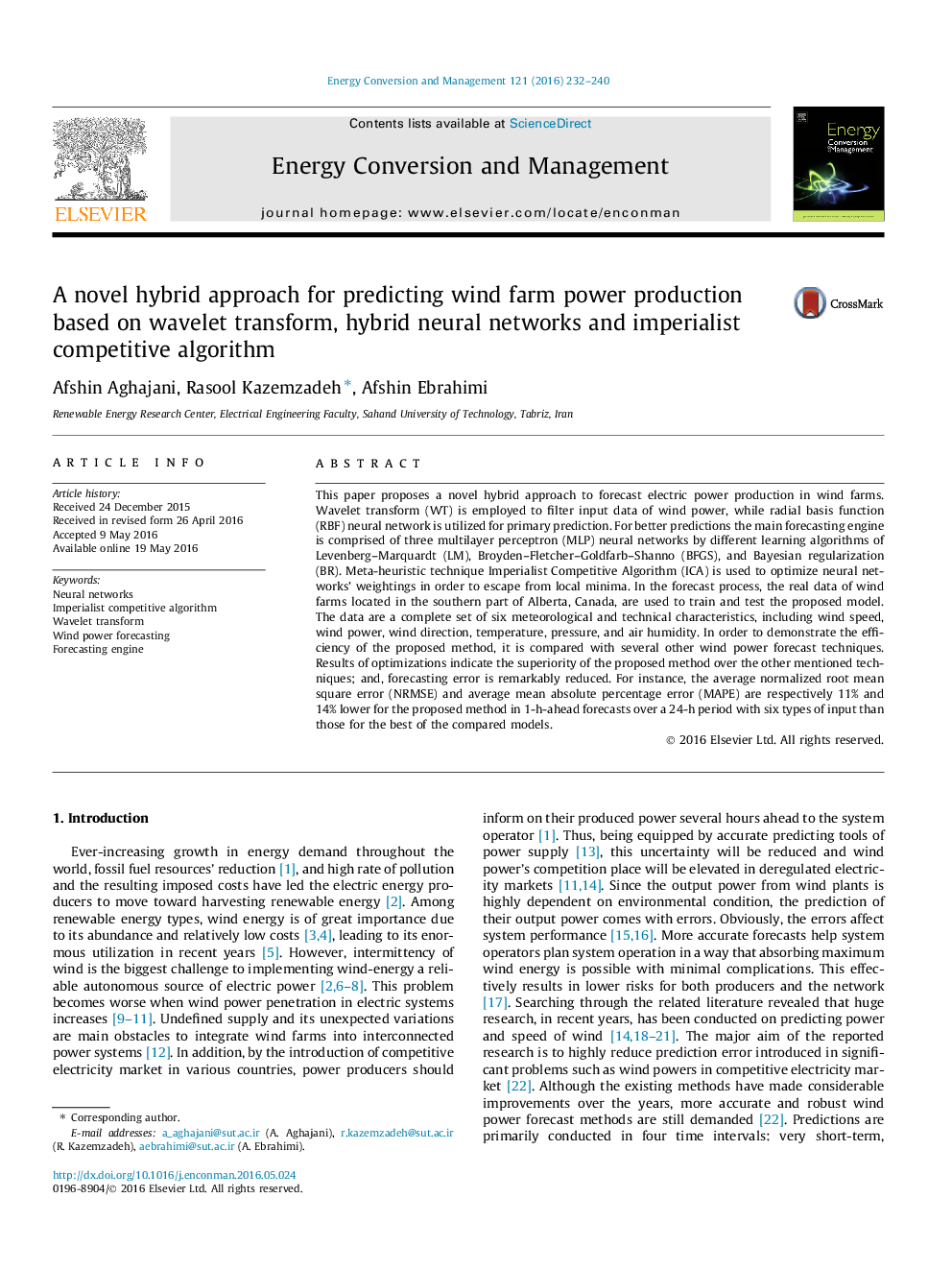| کد مقاله | کد نشریه | سال انتشار | مقاله انگلیسی | نسخه تمام متن |
|---|---|---|---|---|
| 765097 | 1462841 | 2016 | 9 صفحه PDF | دانلود رایگان |
• Proposing a novel hybrid method for short-term prediction of wind farms with high accuracy.
• Investigating the prediction accuracy for proposed method in comparison with other methods.
• Investigating the effect of six types of parameters as input data on predictions.
• Comparing results for 6 & 4 types of the input parameters – addition of pressure and air humidity.
This paper proposes a novel hybrid approach to forecast electric power production in wind farms. Wavelet transform (WT) is employed to filter input data of wind power, while radial basis function (RBF) neural network is utilized for primary prediction. For better predictions the main forecasting engine is comprised of three multilayer perceptron (MLP) neural networks by different learning algorithms of Levenberg–Marquardt (LM), Broyden–Fletcher–Goldfarb–Shanno (BFGS), and Bayesian regularization (BR). Meta-heuristic technique Imperialist Competitive Algorithm (ICA) is used to optimize neural networks’ weightings in order to escape from local minima. In the forecast process, the real data of wind farms located in the southern part of Alberta, Canada, are used to train and test the proposed model. The data are a complete set of six meteorological and technical characteristics, including wind speed, wind power, wind direction, temperature, pressure, and air humidity. In order to demonstrate the efficiency of the proposed method, it is compared with several other wind power forecast techniques. Results of optimizations indicate the superiority of the proposed method over the other mentioned techniques; and, forecasting error is remarkably reduced. For instance, the average normalized root mean square error (NRMSE) and average mean absolute percentage error (MAPE) are respectively 11% and 14% lower for the proposed method in 1-h-ahead forecasts over a 24-h period with six types of input than those for the best of the compared models.
Journal: Energy Conversion and Management - Volume 121, 1 August 2016, Pages 232–240
